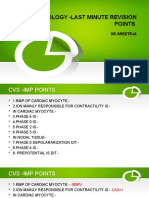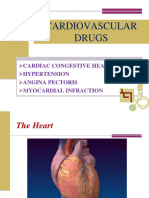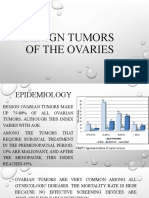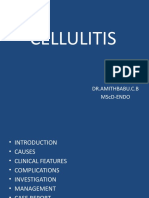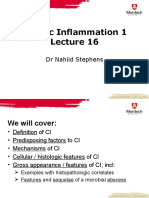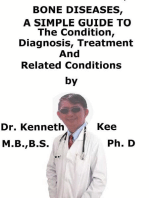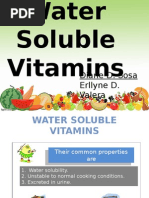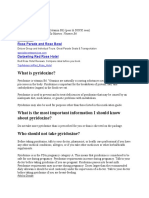Krok Hacks 1: 1.) Helminths
Krok Hacks 1: 1.) Helminths
Uploaded by
Moatasem AhmedCopyright:
Available Formats
Krok Hacks 1: 1.) Helminths
Krok Hacks 1: 1.) Helminths
Uploaded by
Moatasem AhmedOriginal Title
Copyright
Available Formats
Share this document
Did you find this document useful?
Is this content inappropriate?
Copyright:
Available Formats
Krok Hacks 1: 1.) Helminths
Krok Hacks 1: 1.) Helminths
Uploaded by
Moatasem AhmedCopyright:
Available Formats
KROK HACKS 1
1.) HELMINTHS
a) Opisthorchis: The helminth with the smallest egg
b) Enterobias vermicularis: Perianal swab/fold or worm in underwear.
c) Echinococcus granulosus: Main carrier is a DOG.
d) Diphyllobothrium Latum: Main carrier is a FISH.
e) Toxoplasma gondii: Main carrier is a CAT.
f) Filarial worm: Causes Elephantiasis and eye infection(eye worm)
g) Ascaris Lumbricoides: Eosinophiles will be in the question. It causes Ascariasis.
h) Trichinella and Taenias: Found in PORK.
i) Schistosoma: You will see Australia and egg with characteristic sharp point. It will cause
urogenital or vaginal infection.
2.) PROTOZOAS AND BACTERIA
a.) Balantidum Coli: Cilia all around or four nucleus or two nuclei two vacuoles.
b.) Giardia Lamblia: Two nucleus and four pairs of flagella.
c.) Dysenteric amoeba: Four nucleus cyst in feces.
d.) Trichomonia: Causes Urogenital and vaginal infection.
e.) Leishmania: It causes both cutaneous and visceral(organs) diseases.
f.) Leptospira: (Spirochete) C&S shape causes nose bleeding
g.) Diphtheria: Chinese letters
h.) Treponema pallidum: Spiral shape(Spirochetes)
3.) ARTHROPODS
a) Wohlfahrt Fly: It causes MYIASIS
b) Karakurt Spider: Roundish black abdomen with two rows of red spots on it dorsal surface.
c) Sarcoptes Scabies: Causative agent of Scabies.
d) Demodicosis or Demodex: Causative agent of Acne etc.
CELLS IN PATHMORPHOLOGY
a.) Langhans cells: Tuberculosis
b.) Aschoffs bodies: Acute verrucous Endocarditis
c.) Councilman’s bodies: Viral Hepatits
d.) Virchow’s cells: Leprosy
e.) Mikulich Cell: Rhinoscleroma
f.) Reed-Sternberg cell: Hodgkin disease,lymphogranulomatosis
g.) Beresovsky-sternberg: Lymphogranulomatosis
h.) Warthin-Finkeldey cells: Measles
ETIOLOGIC FACTORS AND MORPHOLOGICAL CHANGES
a.) Typhoid fever: Salmonella typhi; affects small intestine and causes ulceration.
b.) Dysentry:Shigella dysentery; Occurs usually colon. Stages are: Catarrhal,fibrinous, ulcerative
colitis and repair.
c.) Appendicitis: Inflammation of the appendix; Incision is done at Mc burney’s point(From ant.sup
iliac spine to the umbilicus, junction between lat. 1/3 and middle 1/3)…Stages are: Catarrhal,
phlegmonous, Ulcerophlegmonous, gangrenous and apostematous)
d.) Coccal bacterial: These agents cause purulent processes….So if you see pus in your question
check for any cocci bacterial in the option.
e.) Cirrhosis: Pseudolobules
GENERAL SIGNS OF SOME PATHOLOGIES.
a.) Anthracosis: Miner and black deposits in the lung tissue.
b.) Croupous/Lobar pneumonia: Neutophil, fibrin and grey or red hepatization.
c.) Amyloidosis: Congo red, lardaceous kidney
d.) Sago Spleen: Mahogany with enlarged follicles
e.) Scarlet Fever: Crimson tongue
f.) Infuenza: Panbronchitis or larngotracheobronchitis(Severe form).
g.) Lipoma: movable soft tissue mass of lipocyte obscuring psoas muscle.
h.) Fibroma: movable soft fibrous tissue.
i.) Infectious endocarditis: Sepsis that affect edges of valves.
j.) Rheumatic endocarditis: Deformation of valves due to rheumatic diseases
k.) Spotted fever: Spots and specks.
l.) Epidemic typhus: Lice
m.) Brills disease: Relapse of epidermic typhus after some years.
n.) Hypospadia: Opening of the urethra below the penis.
o.) Epispadia: Opening of the urethra above the penis.
p.) Diffuse cardiosclerosis: Multiple whitish layers in myocardium.
q.) Baccilus Anthrax: On the cattle farm. Ascolis test.
r.) Actinomycosis: Fungal infection associated with pus
s.) Spore checking: Oil immersion and ozhensko method.
t.) Capsule: Burri-Gins technique
u.) Chronic or choriosepsis: Intoxication usually from wound.
v.) Chorioepithelioma:Sponge with cyncytiotrophoblast.
w.) Syphilis: Caused by treponema pallidum(Spirochetes) perivasculitis endovasculitis.
x.) Tuberculoma: Secondary form of tuberculosis with a capsule formation.
y.) Fibro-cavernous tuberculosis: Secondary form with cavities and walls.
z.) Caseous necrosis: Tuberculosis
aa.) Fibro-sarcoma: Meat of fish
bb.) Sub-acute glomerulonephritis: Crescent, demilume, semilunar.
cc.) Systemic Lupus Erythematous: Antinuclear antibodies, wire loops, autoimmune.
dd.) Chronic glomerulonephritis: Decrease of active nephrons.
ee.) Acute glomerulonephritis: due to shock, immunecomplex.
ff.) Osteomyelities: Sequester formation.
gg.) Cholera: Rice water stool
hh.) Tuberculosis: Horseshoe shape
VITAMINS AND CO-FACTORS.
a.) Vitamin B1: Thiamin(Thiamin pyrophosphate) deficiency: Beri-beri
b.) Vitamin B2: Riboflavin(FAD,FMN) Deficiency: Ariboflavinosis
c.) Vitamin B3: Niacin(NAD) Dificency: Pellagra and D-triad..Diarrhea, dermatitis and dementia….It
is gotten from tryptophan…Maize excess causes it as well.
d.) Vitamin B6: Pyridoxal phosphate, pyridoxal and pyridoxamine…Responsible for transamination
and decarboxylation reactions. Isoniazid is an antivitamin B6 so this vitamin should be taken along with
this drug.
e.) Vitamin B9: Folic acid(Tetrahydrofolate) Responsible for DNA synthesis. Co-trimoxazole blocks
pathway of its synthesis….Methotrexate blocks the formation of THF(active form of B9).
f.) Vitamin B12: Cyanocobalamin: absorbed in the stomach by intrinsic factor also called castle or
glycomucoproteins. Its deficiency leads to absence of the synthesis of THFA(active form of B9) leading to
formation of MEGALOBLASTIC ANEMIA AND ATROPHY OF THE TONGUE.
g.) Vitamin C: Ascorbic acid..Responsible for connective tissue strengthening(Collagen) and blood
vessel. It is also an anti-oxidant. (Oxyproline, lysyl oxidase,proline,hydroxyproline) Deficiency:Scurvy
h.) Vitamin A: Retinol(Trans retinoic acid)..Responsible for night vision and maintenance of skin.)
Deficiency leads to Night blindness and excess leads to hyperkeratosis
i.) Vitamin D3: Cholecalciferol…For calcium absorption and bone strengthening.
j.) Vitamin E: Tocopherol…It is an antioxidant
k.) Vitamin K: Vicasolum(Synthetic form)…For post translational modification of coagulation factor
2,7,9 and 10.
ENZYMATIC BIO-MAKERS
a.) LDH1,2: Heart pathology(Myocardial infarction)
b.) LDH &CPK: Early stage of myocardial infaction.
c.) CPK: Muscular dystrophy
d.) ALT: Liver
e.) AST: Heart
f.) GAG: Bones
g.) Ceruloplasmin: For copper transport(Wilson’s disease)
h.) C-reactive: Acute phase protein for inflammation.
i.) UDP-Glucoronyltransferase: For glucorination.
j.) G6PD: It synthesizes NADPH which protects cell membrane from lysis.
k.) Uroporphyrinogen 1: Its accumulation under the skin leads to photosensitivity.
l.) Uroporphyringen 1 co-synthase: Its deficiency leads to accumulation of uroporphyrinogen 1
which causes photosensitivity.
m.) Phenylketonuria: Greenish urine
n.) Alcaptonuria:Black urine…Acummunlation of homogentisic acid.
o.) Bence jones protein: Paraproteinemia(In plasmocytoma) These are abnormal proteins.
p.) Xanthine oxidase: Allupurinol and colchicine in purine degredation pathway.
q.) Carbamoyl phosphate: Ornithine –urea cycle.
r.) Glutamic acid: Removal of ammonia from the brain.
s.) Hippuric acid: It is used to check th detoxification function of liver.
t.) Galactosemia: Galactose-1-phosphate uridyltransferase, cataract.
u.) Maple syrup: Accumulation of branch chain aminoacids in urine.
v.) Tay-sachs: Gangliosidase or sphingomyelin(Lipid) insufficiency.
w.) Contrycal: Acute pancreatitis
x.) Bromine poison: Use sodium chloride
y.) Lecithin(Phosphatidylcholine): Lipotropic factor
z.) Methionine: For methylation reaction.
CARYOTYPES OF DIFFERENT CHROMOSOMAL PATHOLOGIES.
a.) Down syndrome: 47.21+
b.) Patau syndrome:47.13+
c.) Turner’s syndrome:45XO(Monosomy)
d.) Klinefelter’s syndrome:47XXY
e.) Edward’s syndrome:47.18+
f.) Super female:XXX(Trisomy or triple X)
g.) Cru-d-Chat:47.5+
h.) Holandric trait: Y-Linked…E.g Hypertrichosis
i.) Daltonism :Colour blindness….Recessive sex-linked
j.) Hemophilia: Recessive sex-linked
ALLERGY, TYPES AND EXAMPLE.
a.) Type 1: Anaphylaxis,atopy,reagine or immediate example bronchial asthma
b.) Type ii: Blood transfusion incompatibility
c.) Type iii: Immune complex e.g Serum sickness, Arthus disease
d.) Type iv: Cellular toxicity, In mantu’s test(Tuberculosis)
DRUGS FOR DIFFERENT PATHOLOGIES
a.) Metronidazole: Amebiasis, giardiasis, lambiasis
b.) Aethimizole: For asphyxia of new born
c.) Lobeline hydrochloride: For restoration of respiration after shock etc.
d.) Unithiol: Metal poisoning e.g mercury
e.) Atropine: For organophosphate poisoning.
f.) Neostigmine or proserin: Antidote for Atropine poison.
g.) Calcium chloride: Used as antidote for magnesium sulphate
h.) Acetylcysteine: Used as antidote for paracetamol
i.) Dithylinium: It’s a myorelaxant which causes short term spasm of facial muscles.
j.) Pseudocholinesterase or butyrylcholinesterase: For metabolism of dithylium after its used..Its
insufficiency causes prolongation of dithylinium effect.
k.) Morphine: Naloxone
l.) Carbenicillin sodium: For pseudomonas aeruginosa(blue-pus baccilus).
m.) Ketotifen: Seasonal coryza
n.) Ketamin: Dissocative analgesia which side effect is hallucination.
o.) Digoxin: Chronic cardiac insufficiency
p.) Corglycon: Acute cardiac insufficiency
q.) Tetracycline: Affect teeth
r.) Loratadine: Anti-histamine…Donot cross BBB
DIFFERENT MEDIA/TESTS IN MICROBIOLOGY
a.) Leffler: For diphtheria
b.) Tellurite agar: For Diphtheria
c.) Bordet-gengou: Bordetella Pertusis
d.) Red colonies: E.Coli
e.) Colourless colonies: Salmonella typhi
f.) Zeel-neelsen: For acid resistant bacilli
g.) CFT(Reiter’s test): For Gonorrhea and syphilis
h.) Immunoflourescence: For influenza
DIFFERENT VACCINES AND THEIR CLINICAL USE.
a.) BCG: For tuberculosis
b.) STI: Anthrax
c.) Antidiphteric antitoxic serum: Diphtheria
d.) DPT: Diphtheria, pertussis and tetanus
OTHERS
a) Phage conversion: To make bacteria toxic
b) Phagetyping: To know source of infection
c) 1;20: To repeat test after 10 days
d) 1;40: Confirms diagnosis
e) 1:80: Carrier of disease
f) Neutrophilic leukocytosis: 500 radiation exposure
g) Lymphopenia:200-300 radiation exposure
h) After appendectomy: Intensification of leukopoeisis.
i) After Shock and accident: Redistribution of leucocyte from the marginal pool.
j) Sinoatrial node: 60-80bpm
k) Atrioventricular node: 40-60bpm
l) Bundle of His:20-40bpm
m) Purkinje fibers:10-20bpm
n) Ammonia in the brain usually leads to convulsion,brain edema etc.
o) Evaporation: High humidity with normal or moderate room temperature…e.g 80% humidity and
36oc temperature.
p) Convection: A man putting on clothing in a room.
q) Radiation: A man putting on light clothing and in a closed room.
r.) Conduction: A woman in the water or swimming pool.
Compiled by: KOMI LEESI S. (President, Greatness Club International)
Remember: If you want to be ahead, you must load your head…Greatness…It’s in you
You might also like
- Complete Download Newman and Carranza s Clinical Periodontology 13th Edition Michael G. Newman PDF All ChaptersDocument50 pagesComplete Download Newman and Carranza s Clinical Periodontology 13th Edition Michael G. Newman PDF All Chaptersabronrekhirj100% (2)
- Endocrine Board Review 2020 PDFDocument256 pagesEndocrine Board Review 2020 PDFVikrant57% (7)
- Cures For TinnitusDocument9 pagesCures For TinnitusBob Skins100% (2)
- Krok - Base PharmacologyDocument149 pagesKrok - Base PharmacologyHemant GargNo ratings yet
- Pathanatomy Full MCQ SDocument47 pagesPathanatomy Full MCQ SAbhishek RaoNo ratings yet
- Cholinergic DrugsDocument15 pagesCholinergic DrugsChris Girgis100% (1)
- Pathology SlidesDocument20 pagesPathology SlidesMrgNo ratings yet
- Class Notes On Questionnaires For Pharmacology in The Gastrointestinal TractDocument12 pagesClass Notes On Questionnaires For Pharmacology in The Gastrointestinal TractMarqxczNo ratings yet
- Case Studies in Pathomorphology. Self Assessment Textbook.: Ministry of Public Health of UkraineDocument93 pagesCase Studies in Pathomorphology. Self Assessment Textbook.: Ministry of Public Health of UkraineЯзан Мжарках - 2БNo ratings yet
- Embryo Lab Exercise 1Document7 pagesEmbryo Lab Exercise 1Karmina Santos100% (1)
- Katzung Tables Chapter 11-15 (CV and Renal)Document26 pagesKatzung Tables Chapter 11-15 (CV and Renal)Karl CNo ratings yet
- Antibiotics, Analgesics and Antimicrobials in ChildrenDocument34 pagesAntibiotics, Analgesics and Antimicrobials in Childrenindian dental academyNo ratings yet
- Microbiology Part 3Document74 pagesMicrobiology Part 3Authentic IdiotNo ratings yet
- Krok 1 - 2015 (Anatomy)Document29 pagesKrok 1 - 2015 (Anatomy)mayna ynaNo ratings yet
- Morphologic Patterns of Acute InflammationDocument51 pagesMorphologic Patterns of Acute Inflammationحفصه حسينNo ratings yet
- Mcqs 6Document19 pagesMcqs 6Muhammad JavedNo ratings yet
- Antibiotic Prophylaxis: Francis Neil C. CaranayDocument11 pagesAntibiotic Prophylaxis: Francis Neil C. CaranayNdor BariboloNo ratings yet
- Differential White Blood Cell CountDocument20 pagesDifferential White Blood Cell CountNada hasan100% (2)
- Arteries and VeinsDocument16 pagesArteries and VeinsPrecious Mar Han BayaNo ratings yet
- AnaemiaDocument25 pagesAnaemiaShubhendu ChattopadhyayNo ratings yet
- Antibiotics: Presenter: Naila InamDocument41 pagesAntibiotics: Presenter: Naila InamInam KhanNo ratings yet
- Urinary RenalDocument44 pagesUrinary RenalgorekaNo ratings yet
- Fluid Therapy in Various ConditionsDocument62 pagesFluid Therapy in Various ConditionsAndy F MonroeNo ratings yet
- Ans 30 Dec Nbde 1 RQDocument10 pagesAns 30 Dec Nbde 1 RQKandiwapa ShivuteNo ratings yet
- CYSTSDocument20 pagesCYSTSSumaNo ratings yet
- Physiology - Last Minute Revision Points: DR - SreetejaDocument25 pagesPhysiology - Last Minute Revision Points: DR - SreetejaBanu KubendiranNo ratings yet
- Introduction To HematologyDocument95 pagesIntroduction To HematologyAhmad Farhan Hassan0% (1)
- CVS & Hypolipidemic Drugs-NursingDocument71 pagesCVS & Hypolipidemic Drugs-NursingManikanta Guptha100% (1)
- Thyroglossal Duct CystDocument2 pagesThyroglossal Duct CystPulkitNo ratings yet
- Exam Bds Bds ExamDocument5 pagesExam Bds Bds ExammybdsexamsourceNo ratings yet
- KROK Part - II PDFDocument99 pagesKROK Part - II PDFPiravi 19100% (1)
- RBC Disorder BcqsDocument68 pagesRBC Disorder BcqsMukhtiar AhmedNo ratings yet
- Pathologic Calcification: Dr. Deepak K. GuptaDocument25 pagesPathologic Calcification: Dr. Deepak K. Guptaاحمد زيد سعيد100% (1)
- Immunomodulator 2014Document56 pagesImmunomodulator 2014Leilybadrya100% (1)
- Situational Tasks Such As KROK Pharmacology English Sem 6Document17 pagesSituational Tasks Such As KROK Pharmacology English Sem 6Mi PatelNo ratings yet
- P.G. Curriculum M.D. Pathology Index: 1. GoalDocument18 pagesP.G. Curriculum M.D. Pathology Index: 1. GoalAvwan DududNo ratings yet
- Management of Normal LabourDocument37 pagesManagement of Normal LabourGlucose DRglucoseNo ratings yet
- Scapular RegionDocument21 pagesScapular RegionNick KlyshkoNo ratings yet
- Benign Ovarian TumorsDocument38 pagesBenign Ovarian Tumorssimi yNo ratings yet
- PathologyDocument8 pagesPathologyJemimah Tomarong DespabeladeroNo ratings yet
- CELLULITISDocument66 pagesCELLULITISDR.AMITHBABU.C.B100% (1)
- Department of Periodontics and Implantology: Calcium MetabolismDocument63 pagesDepartment of Periodontics and Implantology: Calcium Metabolismrasagna reddy100% (1)
- Gastric Pathology 2024Document53 pagesGastric Pathology 2024yqhvzf4z22No ratings yet
- Pharmacology Module PDFDocument23 pagesPharmacology Module PDFmirza_baig_46100% (1)
- Blood ClottingDocument11 pagesBlood ClottingsimikuttiyaniNo ratings yet
- Nature of DiseaseDocument14 pagesNature of DiseaseLambo Ignacio Queen Quin100% (1)
- Physiology Calcium Metabolism MCQ AnswersDocument2 pagesPhysiology Calcium Metabolism MCQ AnswersFor ChristNo ratings yet
- Common Parathyroid Disorders in Children: DR Sarar MohamedDocument47 pagesCommon Parathyroid Disorders in Children: DR Sarar MohamedTirou100% (1)
- PharmaDocument16 pagesPharmaPaula Grace Morfe100% (1)
- Introduction To Pathology Infectious DiseasesDocument37 pagesIntroduction To Pathology Infectious DiseasesNirav PatelNo ratings yet
- Protein Synthesis InhibitorsDocument59 pagesProtein Synthesis InhibitorsApurba Sarker Apu100% (1)
- Family Practice Review A Problem Oriented Approach PDFDocument2 pagesFamily Practice Review A Problem Oriented Approach PDFNatalieNo ratings yet
- General Principles of GIT PhysiologyDocument22 pagesGeneral Principles of GIT PhysiologyUsman Ali AkbarNo ratings yet
- 44 Chloramphenicol Tetracyclines Macrolides ClindamycinDocument63 pages44 Chloramphenicol Tetracyclines Macrolides ClindamycinrupalisyanNo ratings yet
- Oral Path Case Study PaperDocument4 pagesOral Path Case Study PaperSukirti MisraNo ratings yet
- Chronic Inflammation 1: DR Nahiid StephensDocument46 pagesChronic Inflammation 1: DR Nahiid Stephensmelinda0% (1)
- Interviewing and The Health HistoryDocument34 pagesInterviewing and The Health HistoryLloyd E. Tria IINo ratings yet
- 2nd Year Mcqs - Mcqs Physiology MedicalDocument4 pages2nd Year Mcqs - Mcqs Physiology MedicalKhadijaSarwar100% (1)
- Bleeding Disorders: Hemorrhagic Diathesis: Frederick R. Llanera, MD, FPSP, Ascpi, Amt, RMTDocument29 pagesBleeding Disorders: Hemorrhagic Diathesis: Frederick R. Llanera, MD, FPSP, Ascpi, Amt, RMTRaymond MalubayNo ratings yet
- Bone Diseases, A Simple Guide To The Condition, Diagnosis, Treatment And Related ConditionsFrom EverandBone Diseases, A Simple Guide To The Condition, Diagnosis, Treatment And Related ConditionsNo ratings yet
- Esophageal Cancer, A Simple Guide To The Condition, Diagnosis And TreatmentFrom EverandEsophageal Cancer, A Simple Guide To The Condition, Diagnosis And TreatmentNo ratings yet
- GIT LiverDocument5 pagesGIT LiverMoatasem AhmedNo ratings yet
- LungDocument5 pagesLungMoatasem AhmedNo ratings yet
- Endocrine Male-FemaleDocument4 pagesEndocrine Male-FemaleMoatasem AhmedNo ratings yet
- Electrical SafetyDocument11 pagesElectrical SafetyMoatasem AhmedNo ratings yet
- Watersolublevit Vasundhara 150819084407 Lva1 App6891Document52 pagesWatersolublevit Vasundhara 150819084407 Lva1 App6891Abdur RafeyNo ratings yet
- About FruitsDocument227 pagesAbout FruitsjooyyrocketNo ratings yet
- Microbiology Lec - 3CDocument16 pagesMicrobiology Lec - 3CEmmy Segovia MurilloNo ratings yet
- Vitamin A, Vitamin D, Thiamine, Riboflavine, Pyridoxine, Niacinamide, Folic Acid, Ascorbic Acid, Panth. AcidDocument130 pagesVitamin A, Vitamin D, Thiamine, Riboflavine, Pyridoxine, Niacinamide, Folic Acid, Ascorbic Acid, Panth. AcidsalinaNo ratings yet
- Chapter 4 MICRONUTRIENTSDocument12 pagesChapter 4 MICRONUTRIENTSSami InglesNo ratings yet
- NCP - Drug Study FormatDocument6 pagesNCP - Drug Study FormatJenny Rose AnieteNo ratings yet
- FSHN Quizes Exam 3Document13 pagesFSHN Quizes Exam 3Jillian NicoleNo ratings yet
- Nutritional AnemiaDocument90 pagesNutritional AnemiaIrham KhairiNo ratings yet
- Diane D. Sosa Erllyne D. ValeraDocument74 pagesDiane D. Sosa Erllyne D. ValeraMissDyYournurseNo ratings yet
- Histamine PeatDocument10 pagesHistamine PeatToxyPlayz100% (3)
- B6 Magnesiumand Vitamin Dthe Triple PlayDocument14 pagesB6 Magnesiumand Vitamin Dthe Triple PlayPaloma RF RFNo ratings yet
- Schon Product List PDF 1Document14 pagesSchon Product List PDF 1vishal vishalNo ratings yet
- Maryam PDF NPCCDocument38 pagesMaryam PDF NPCCmaryam khanNo ratings yet
- Nutrition LEC HANDOUT 1 TOPIC 3Document37 pagesNutrition LEC HANDOUT 1 TOPIC 3mirai desu100% (1)
- Water Soluble VitaminsDocument60 pagesWater Soluble Vitaminsapi-19859346No ratings yet
- Physiology of Intestinal Absorption and SecretionDocument20 pagesPhysiology of Intestinal Absorption and SecretionnablakNo ratings yet
- Pyridoxine (Vitamin b6)Document16 pagesPyridoxine (Vitamin b6)Kuzhandai VeluNo ratings yet
- What Is Pyridoxine?Document5 pagesWhat Is Pyridoxine?Kavutham Raj KSNo ratings yet
- IX. Drug StudyDocument11 pagesIX. Drug StudyRizza ReyesNo ratings yet
- Production of Vitamins 959 Production of Vitamins: January 2010Document23 pagesProduction of Vitamins 959 Production of Vitamins: January 2010Jose Luis MoltoNo ratings yet
- Aging RehabilitationDocument35 pagesAging RehabilitationdrsonuchawlaNo ratings yet
- 105 DRUGS SOPs FOR YSR CLINICSDocument17 pages105 DRUGS SOPs FOR YSR CLINICSrajuNo ratings yet
- Water-Soluble VitaminsDocument32 pagesWater-Soluble VitaminsHomed OpriNo ratings yet
- Energy20drinks HandoutDocument2 pagesEnergy20drinks Handoutapi-236288348No ratings yet
- Autis (Lovi)Document12 pagesAutis (Lovi)chandNo ratings yet
- VitaminsDocument35 pagesVitaminsVũ Hoàng MaiNo ratings yet
- Chapter 1 Part 1 Quiz Basic FoodsDocument5 pagesChapter 1 Part 1 Quiz Basic FoodsAngelica Mae DanaoNo ratings yet
- 15570lectuer 7 Water-Soluble Vitamins-Vitamin (Final)Document31 pages15570lectuer 7 Water-Soluble Vitamins-Vitamin (Final)FreezingSoul FreezingSoulNo ratings yet


























